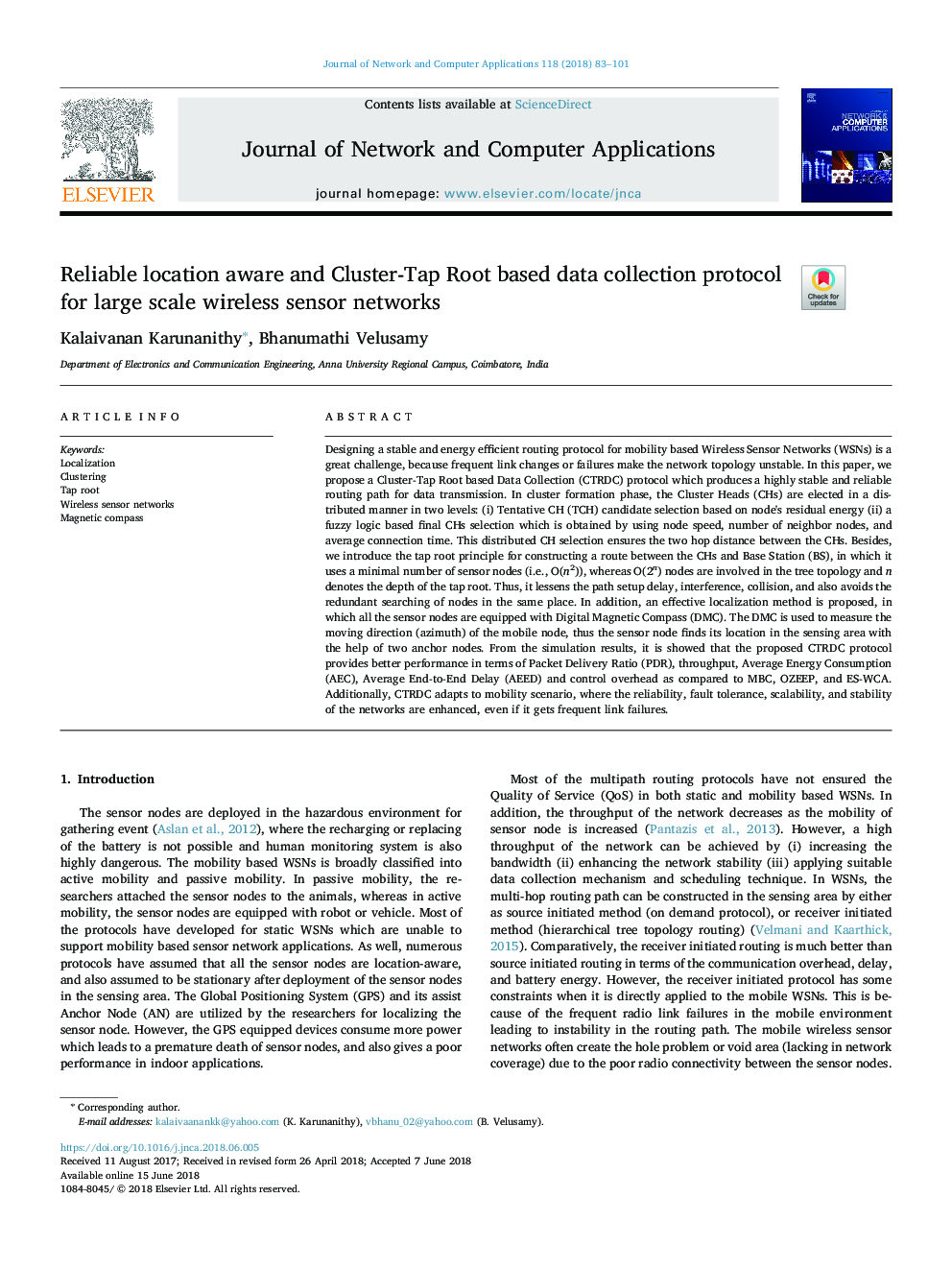| Article ID | Journal | Published Year | Pages | File Type |
|---|---|---|---|---|
| 6884670 | Journal of Network and Computer Applications | 2018 | 19 Pages |
Abstract
Designing a stable and energy efficient routing protocol for mobility based Wireless Sensor Networks (WSNs) is a great challenge, because frequent link changes or failures make the network topology unstable. In this paper, we propose a Cluster-Tap Root based Data Collection (CTRDC) protocol which produces a highly stable and reliable routing path for data transmission. In cluster formation phase, the Cluster Heads (CHs) are elected in a distributed manner in two levels: (i) Tentative CH (TCH) candidate selection based on node's residual energy (ii) a fuzzy logic based final CHs selection which is obtained by using node speed, number of neighbor nodes, and average connection time. This distributed CH selection ensures the two hop distance between the CHs. Besides, we introduce the tap root principle for constructing a route between the CHs and Base Station (BS), in which it uses a minimal number of sensor nodes (i.e., O(n2)), whereas the tree topology utilized O(2n) nodes and n denotes the depth of the tap root. It is observed that it lessens the path setup delay, interference, collision, and also avoids the redundant searching of nodes in the same place. In addition, an effective localization method is proposed, in which all the sensor nodes are equipped with Digital Magnetic Compass (DMC). The DMC is used to measure the moving direction (azimuth) of the mobile node, thus the sensor node finds its location in the sensing area with the help of two anchor nodes. From the simulation results, it is showed that the proposed CTRDC protocol provides better performance in terms of Packet Delivery Ratio (PDR), throughput, Average Energy Consumption (AEC), Average End-to-End Delay (AEED) and control overhead as compared to MBC, OZEEP, and ES-WCA. Additionally, CTRDC adapts to mobility scenario, where the reliability, fault tolerance, scalability, and stability of the networks are enhanced, even if it gets frequent link failures.
Related Topics
Physical Sciences and Engineering
Computer Science
Computer Networks and Communications
Authors
Karunanithy Kalaivanan, Velusamy Bhanumathi,
